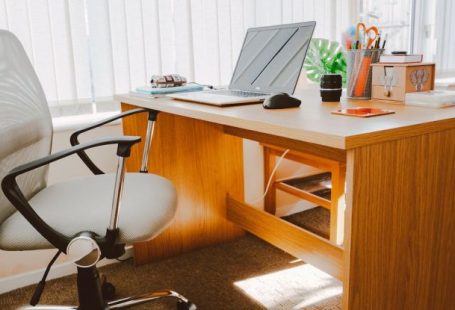Working from home has become increasingly popular in recent years, with more people embracing the flexibility and convenience that comes with setting up a home office. However, creating a functional workspace within the confines of your home can be a challenging task. From managing distractions to optimizing productivity, there are several factors to consider when organizing a home office. By focusing on key aspects such as layout, organization, and personalization, you can design a space that not only promotes efficiency but also reflects your unique style and preferences. Here’s a closer look at what it takes to create a well-organized and functional home office.
**Designing an Efficient Layout**
The layout of your home office plays a crucial role in determining your overall productivity and comfort. When designing the layout, consider factors such as natural light, ventilation, and proximity to amenities. Position your desk near a window to take advantage of natural light, which can help reduce eye strain and boost your mood. Additionally, ensure that your workspace is well-ventilated to maintain a comfortable temperature throughout the day.
**Investing in Quality Furniture and Equipment**
Investing in quality furniture and equipment is essential for creating a functional home office. Choose a comfortable chair that provides adequate support for your back to prevent discomfort and potential health issues. Your desk should be spacious enough to accommodate your computer, monitor, and other essential work items. Consider investing in ergonomic accessories such as a keyboard tray or monitor stand to enhance your comfort and posture while working.
**Creating a Clutter-Free Environment**
A cluttered workspace can be distracting and hinder your productivity. To create a clutter-free environment, invest in storage solutions such as shelves, cabinets, and organizers to keep your workspace organized. Designate specific areas for different tasks, such as a filing system for paperwork and a drawer for office supplies. Regularly declutter your workspace to maintain a clean and organized environment that promotes focus and efficiency.
**Personalizing Your Space**
Personalizing your home office can help create a space that inspires creativity and reflects your personality. Choose decor elements that motivate and energize you, such as inspirational quotes, artwork, or plants. Consider painting the walls a color that enhances your mood and productivity, such as calming blues or energizing yellows. Adding personal touches to your workspace can make it a more inviting and comfortable environment that encourages you to do your best work.
**Establishing Boundaries**
When working from home, it’s important to establish boundaries between your personal and professional life. Set clear work hours and communicate them to your family members to minimize interruptions. Create a separate space dedicated solely to work to signal to your brain that it’s time to focus and be productive. Establishing boundaries can help you maintain a healthy work-life balance and prevent burnout.
**Wrapping Up**
Creating a functional home office requires careful consideration of layout, furniture, organization, personalization, and boundaries. By designing an efficient layout, investing in quality furniture and equipment, creating a clutter-free environment, personalizing your space, and establishing boundaries, you can create a workspace that promotes productivity and reflects your unique style. Whether you’re a remote worker, freelancer, or entrepreneur, a well-organized home office is essential for achieving success and maintaining a healthy work-life balance.





